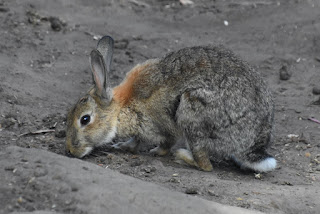We picked up our camper van quite early. We had the bonus of being upgraded to a newer vehicle, but the disappointment of finding that the design didn't suit us as well as we had hoped. Never mind. It was relatively easy to drive, and that is important in Tasmania where many of the roads are quite narrow and winding.
We had taken our own TomTom satnav with us. It has performed well for us all over North America and England as well as in NZ, and a Garmin machine supplied with a rental car in Cape Town was a disaster, so we now always load the appropriate maps and take our own gear.
First stop was a supermarket for supplies. That got us sorted for food, but Australian supermarkets do not sell wine. Luckily there was a liquor store close by. The last time we visited Australia wine was cheaper than in NZ, but now the position has reversed. The difference isn't huge, but it was a disappointment.
We set off with only a very rough outline of an itinerary. Head to Port Arthur and get the depressing convict history done first, then proceed around the island in a counterclockwise direction. However, there was one destination that didn't conveniently fit this plan. The Bonorong Wildlife Sanctuary is North East of Hobart and might be missed if we returned to Hobart from the West. So we went there first.
As well as breeding Tasmanian Devils, the sanctuary keeps small numbers of other native fauna, unwanted exotic pets and cares for injured wild animals. It also seems to be an effective magnet for rabbits and several species of birds.
Devils are extinct on the mainland and in Tasmania are plagued by the currently incurable devil facial tumour disease, a contagious cancer. Bonorong is one of several organisations ensuring there is a disease-free pool to reintroduce to the wild if necessary. We were told that scientists are pursuing several ideas, and the chances of eliminating the virus are now quite good.

The camper van company very strongly recommended having a powered site for the first night. They offer a free app that helps locate campgrounds, petrol stations and other valuable services. The closest campground to Port Arthur seemed rather expensive, but White Beach was more reasonable and only 12 minutes drive from the historical site. It turned out to be a great choice; the best campground we used.

.jpeg)










No comments:
Post a Comment